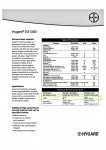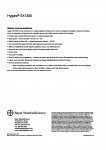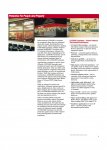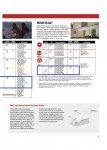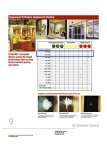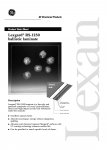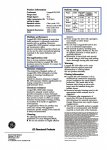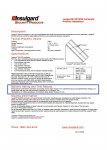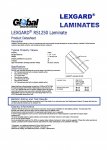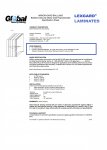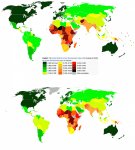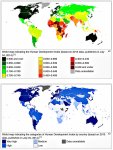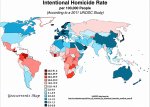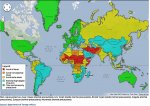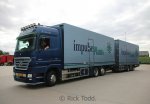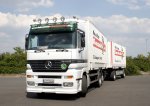biotect
Designer
..
CONTINUED FROM PREVIOUS POST
********************************************
6. Blast Protection?
********************************************
The Landrover Sentinel also raises the question of blast protection. Will the TerraLiner need it? I'm not sure. Perhaps underbody blast-protection, simply because so much of the world is littered with undetonated mines from past conflicts. But protection against grenades, or a 15 kg of TNT in a side-blast? Somehow I doubt it. The TerraLiner will not be carrying high-value political targets of the kind that would merit assault using grenades, and it will try to avoid places where IEDs are common, IEDs configured to blast from the side.
Even still, the Sentinel's specifications prompted me to research Bayer's "Hygard" product line a bit more. Recall that Hygard all-plastic bulletproof glazing would be strongly preferred because it resists white-out and spidering. See http://www.modernplastics.com/blog/hygard-bullet-resistant-sheets/ for a particularly lucid and compact summary:
Before reading this, I had thought that Hygard products "top out" with the MS line of all-plastic bullet-resistant glass, where the most suitable product for use in the TerraLiner would MS1250 glazing, rated to UL 6. But turns out there is another range of "EX" and "Sentinel" products beyond that, designed for blast-resistance as well. There is a comprehensive PDF at http://www.covestro.com/~/media/Pro...uments/Brochures/Americas/BRO044_Security.pdf :

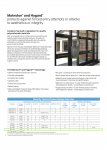

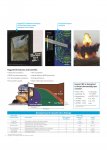
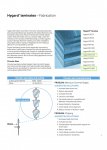

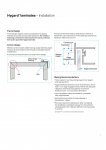
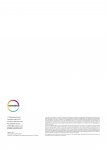
********************************************
CONTINUED IN NEXT POST..
..
CONTINUED FROM PREVIOUS POST
********************************************
6. Blast Protection?
********************************************
The Landrover Sentinel also raises the question of blast protection. Will the TerraLiner need it? I'm not sure. Perhaps underbody blast-protection, simply because so much of the world is littered with undetonated mines from past conflicts. But protection against grenades, or a 15 kg of TNT in a side-blast? Somehow I doubt it. The TerraLiner will not be carrying high-value political targets of the kind that would merit assault using grenades, and it will try to avoid places where IEDs are common, IEDs configured to blast from the side.
Even still, the Sentinel's specifications prompted me to research Bayer's "Hygard" product line a bit more. Recall that Hygard all-plastic bulletproof glazing would be strongly preferred because it resists white-out and spidering. See http://www.modernplastics.com/blog/hygard-bullet-resistant-sheets/ for a particularly lucid and compact summary:
Properties of Hygard Sheets
Hygard's high-strength polycarbonate construction is further fortified by the addition of protective coatings as well as multiple material plies depending on the level of needed resistance.
- A solid polycarbonate base layer provides the foundation of protection. This material is extremely stable and resistant to impacts of varying natures.
- Additives are included in the polycarbonate to resist yellowing and splintering. These properties help Hygard sheets maintain their crystal-clear, glass-like transparency even after attack. Unlike bullet-resistant glass, attacks do not result in “spider-web” spalling or white out that eliminates visibility and makes responding to threats difficult.
- Exterior surfaces have a Makrolon AR hard coat that makes cleaning easier while resisting marring, scratches, chemical attacks or graffiti.
- Multiple plies can be used to increase protection against ballistics or blast impact.
- Some applications, such as Hygard Sentinel, have proprietary steel mounting structures embedded that offer protection against terrorism or natural disaster, exceeding U.S. Military standards.
- All Hygard products have a seven-year limited warranty that covers coating failure, yellowing or hazing not resulting from misuse or outside forces.
- All of these materials are lightweight and represent a low-cost, lower-maintenance alternative to most bullet-resistant glasses.
Levels Offered by Hygard Bullet Resistant Sheets
Covestro provides several levels of protection with their Hygard bullet-resistant sheet polycarbonate product.
- Hygard BR and MS offer ballistics resistance in varying grades. The lowest level of Hygard BR can resist multiple gunshots from typical handguns and even some high-powered ones. Hygard MS can offer an extremely-high level of ballistics protection from high-powered machine guns or rifles.
- Hygard EX was engineered by Covestro to “meet & exceed GSA, DoD and DoS anti-terrorism force protection standards,” in their own words. This material not only resists ballistic impacts, but it also protects against high-pressure loads or shock waves.
- Hygard Sentinel represents the ultimate solution for building shell protection. The Hygard multi-ply laminate sheet material is supplemented further by the addition of a steel mounting structure that can resist blast impacts or natural disasters.
Before reading this, I had thought that Hygard products "top out" with the MS line of all-plastic bullet-resistant glass, where the most suitable product for use in the TerraLiner would MS1250 glazing, rated to UL 6. But turns out there is another range of "EX" and "Sentinel" products beyond that, designed for blast-resistance as well. There is a comprehensive PDF at http://www.covestro.com/~/media/Pro...uments/Brochures/Americas/BRO044_Security.pdf :








********************************************
CONTINUED IN NEXT POST..
..
Last edited:

